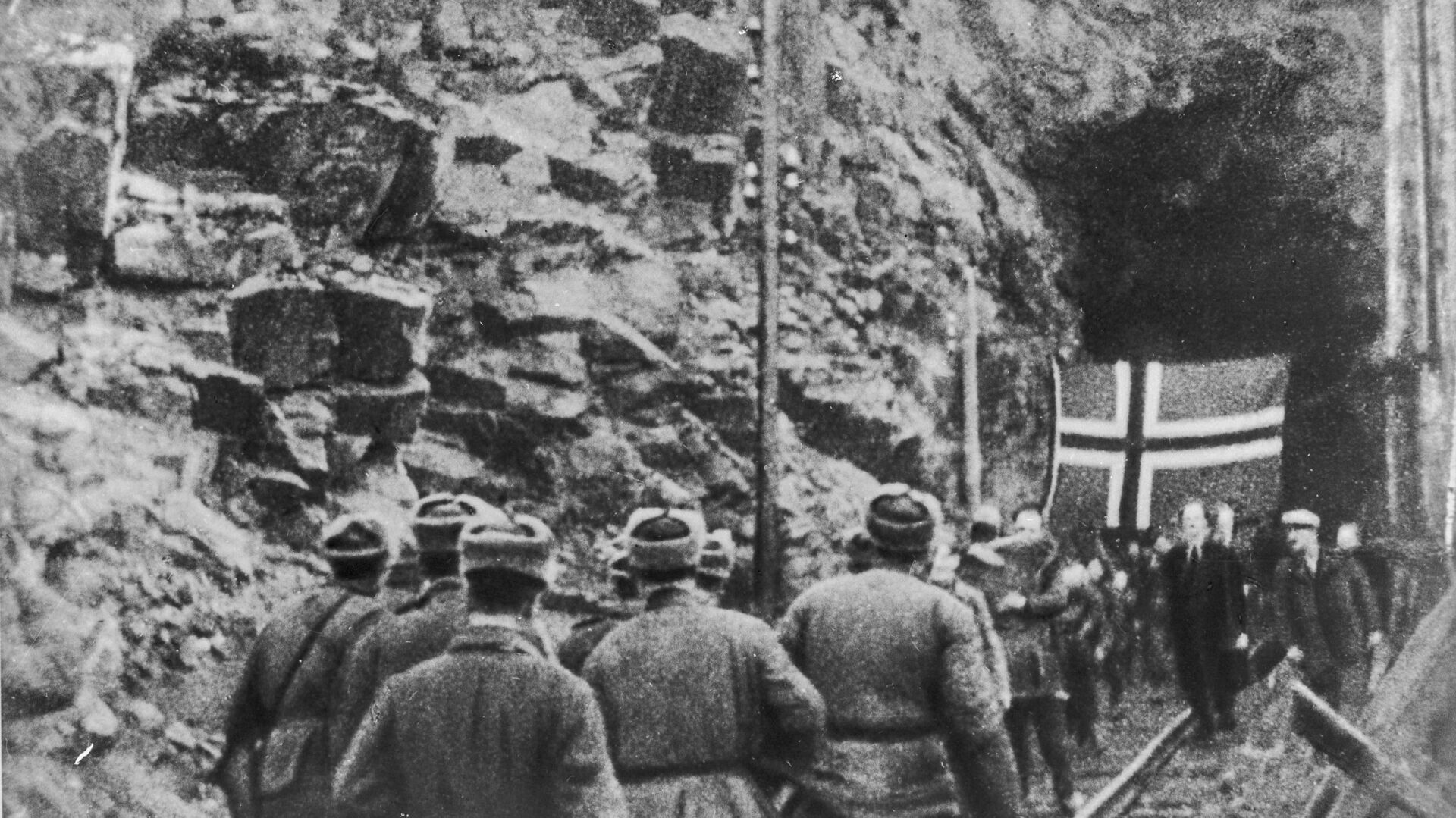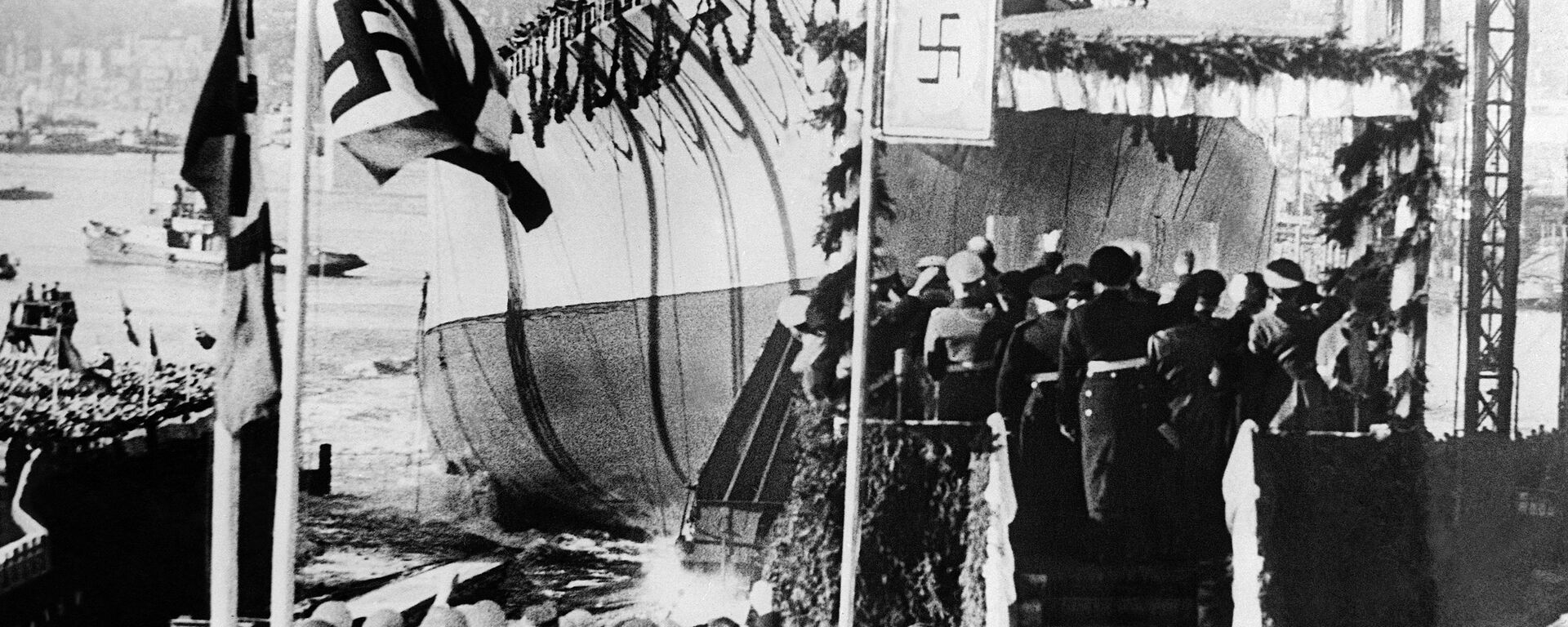https://sputnikglobe.com/20221109/norway-to-map-thousands-of-nazi-defense-facilities-in-massive-local-history-project-1103919968.html
Norway to Map Thousands of Nazi Defense Facilities in Massive Local History Project
Norway to Map Thousands of Nazi Defense Facilities in Massive Local History Project
Sputnik International
The underlying idea of the huge task, described as “formidable” by one of the activists, is to preserve the history of the Second World War and teach it to... 09.11.2022, Sputnik International
2022-11-09T09:35+0000
2022-11-09T09:35+0000
2022-11-18T09:22+0000
science & tech
history
archeology
norway
scandinavia
news
europe
wwii
nazi germany
https://cdn1.img.sputnikglobe.com/img/104198/12/1041981272_0:514:3524:2496_1920x0_80_0_0_1dc36d25f532791e8d935b36bc617eb0.jpg
The Germans left an indelible mark when they invaded Norway during the Second World War. Now, nearly 80 years later, the historic war facilities, some of which are in surprisingly good condition, are to be mapped and compiled into a single registry.This gigantic task of registering all German war remains around the country will be carried out by local history groups in collaboration with the authorities. The underlying idea is to preserve the history of the Second World War and teach it to future generations, as well as to improve accessibility for people who want to see the facilities in person.When Germany occupied Norway on 9 April 1940, they launched a gigantic expansion of defense facilities along the entire coast of the Nordic country. Thousands of small and large facilities were built in a bid to stop Allied ships from entering Norway.“It is impressive what the occupiers were able to accomplish over their years in Norway,” Gunnar Hojem, the chairman of the National Association for Local History, told Norwegian media.According to Hojem, the work will commence in Namsos and Sørfold in Nordland County. In the Namsenfjord alone, there are up to 1,000 German defense works, both large and small, he stressed, foreseeing a “formidable” task in the next few years.Namsos was strategically important in the middle of Norway. In the spring of 1940, British and French soldiers landed there in a failed attempt to beat the Germans back into central Norway.Namsos’ famous torpedo battery was built between 1942 and 1944, mostly by the Soviet prisoners of war. Today, it remains a site of pilgrimage by history buffs. Inside, ammunition crates, kitchen stoves, wiring and even paintings on the walls are preserved.“It's fun to see how much interest there is still in war history. Just look at the turn-out today,” Gudrun Flatebø of the Namsos municipality told local media.Archaeologist Lars Forseth of Trøndelag county municipality suggested that now is the right time to register all the facilities the Germans have left behind.Norway was occupied by Nazi Germany from April 1940, with conventional armed resistance ending in June 1940. It remained subjugated until German forces surrendered in Europe in May 1945. During these five years, the country was ruled by the Reich Commissariat of Norway in collaboration with a pro-German puppet regime led by Vidkun Quisling, whose name subsequently became synonymous with “traitor” in Norwegian and other Nordic languages.The Soviet Union played a key role in liberating Finnmark, Norway’s northernmost province that was heavily militarized by the Germans during the war years.
https://sputnikglobe.com/20220729/echoes-of-war-giant-swastika-pops-up-in-norwegian-school-during-renovation-1097913833.html
norway
scandinavia
nazi germany
Sputnik International
feedback@sputniknews.com
+74956456601
MIA „Rossiya Segodnya“
2022
News
en_EN
Sputnik International
feedback@sputniknews.com
+74956456601
MIA „Rossiya Segodnya“
Sputnik International
feedback@sputniknews.com
+74956456601
MIA „Rossiya Segodnya“
world war ii, second world war, nazi defence facilities, nazi occupation of norway, local lore
world war ii, second world war, nazi defence facilities, nazi occupation of norway, local lore
Norway to Map Thousands of Nazi Defense Facilities in Massive Local History Project
09:35 GMT 09.11.2022 (Updated: 09:22 GMT 18.11.2022) The underlying idea of the huge task, described as “formidable” by one of the activists, is to preserve the history of the Second World War and teach it to future generations, as well as make the historic facilities more accessible to the public.
The Germans left an indelible mark when they invaded Norway during the Second World War. Now, nearly 80 years later, the historic war facilities, some of which are in surprisingly good condition, are to be mapped and compiled into a single registry.
This gigantic task of registering all German war remains around the country will be carried out by local history groups in collaboration with the authorities. The underlying idea is to preserve the history of the Second World War and teach it to future generations, as well as to improve accessibility for people who want to see the facilities in person.
When Germany occupied Norway on 9 April 1940, they launched a gigantic expansion of defense facilities along the entire coast of the Nordic country. Thousands of small and large facilities were built in a bid to stop Allied ships from entering Norway.
“It is impressive what the occupiers were able to accomplish over their years in Norway,” Gunnar Hojem, the chairman of the National Association for Local History, told Norwegian media.
According to Hojem, the work will commence in Namsos and Sørfold in Nordland County. In the Namsenfjord alone, there are up to 1,000 German defense works, both large and small, he stressed, foreseeing a “formidable” task in the next few years.
Namsos was strategically important in the middle of Norway. In the spring of 1940, British and French soldiers landed there in a failed attempt to beat the Germans back into central Norway.
Namsos’ famous torpedo battery was built between 1942 and 1944, mostly by the Soviet prisoners of war. Today, it remains a site of pilgrimage by history buffs. Inside, ammunition crates, kitchen stoves, wiring and even paintings on the walls are preserved.
“It's fun to see how much interest there is still in war history. Just look at the turn-out today,” Gudrun Flatebø of the Namsos municipality told local media.
Archaeologist Lars Forseth of Trøndelag county municipality suggested that now is the right time to register all the facilities the Germans have left behind.
“For the generations who experienced the war, this was a sensitive topic. It is only now that we can do this important work. For Hitler, Norway was perhaps the most important defense post against the Allies,” Forseth mused.
Norway was occupied by Nazi Germany from April 1940, with
conventional armed resistance ending in June 1940. It remained subjugated until German forces surrendered in Europe in May 1945. During these five years, the country was ruled by the Reich Commissariat of Norway in collaboration with a pro-German puppet regime led by Vidkun Quisling, whose name subsequently became synonymous with “traitor” in Norwegian and other Nordic languages.
The Soviet Union played a key role in liberating Finnmark, Norway’s northernmost province that was heavily militarized by the Germans during the war years.


